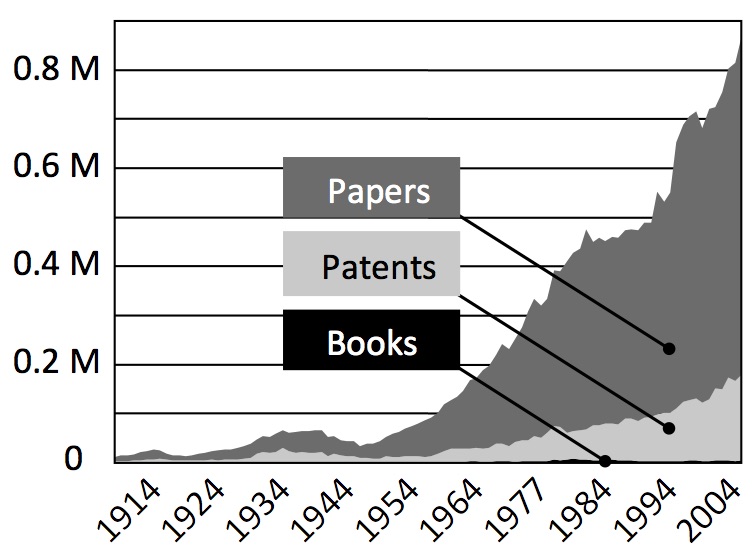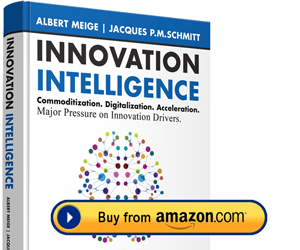This article is a first of a series about knowledge acceleration and fragmentation.
Examining the past century, we can see that the rates of both knowledge creation and innovation have accelerated.
It is sometimes difficult for people of our time to appreciate the quantity of knowledge that humankind has accumulated throughout history. A mental exercise that may help consists of scanning the inventory of knowledge that forms the basis for modern items such as the mobile phone, the hybrid car, weather forecasting, breast cancer treatment, and so forth. Let us begin with the oral wisdom of our ancestors, and then consider the knowledge of ancient Greek philosophers as Archimedes and Pythagoras, and finally proceed, layer by layer, through knowledge created from the Industrial Revolution up to the present day. By following this progression, we can assemble a huge pyramid of intricate and additive pieces of knowledge.
The difficulty lies in transforming this intellectual vertigo into quantitative data. Let’s explore some illustrative facts and driving factors.
To follow the time variations of knowledge creation, let’s use a simple proxy relevant to both knowledge and innovation: the number of peer-reviewed scientific publications as recorded by the American Chemical Society’s Chemical Abstracts Service (CAS)[1]. The CAS databases cover most hard sciences with the exception of medicine and applied engineering. Although CAS does not cover all knowledge, what it does cover represents a significant portion of the knowledge that is used as a basic ingredient for innovation.

The chart shows the historical publication rate of scientific documents, papers, patents, and books listed in Chemical Abstracts Service.
Note that all the publications counted in our proxy are assumed to contain some new knowledge, as guaranteed by a review from a referee, an examiner, or a journal editor. As a result, the proxy should serve as a meaningful indicator despite some redundancy. The data shown in the figure covers the century from 1904 to 2004. The publication rate took small dip during World War II, but the growth in the second part of the twentieth century has been spectacular. A small pause, which we will discuss in the following section of this chapter, is also apparent from the shape of the curve during the 1980s. Note that the chart stops short after the year 2000. By that time the number of paper publications was no longer a good proxy due to the turbulence associated with the Internet gradually displacing printing as a media for knowledge transfer.
Despite the difficulty of reliably tracking publication rate since the advent of the Internet, there is not the slightest doubt that the pace of knowledge creation is faster than ever, despite persistent doubts about the newness and quality of material published on the Internet.
Although we have used scientific publications as a proxy for global knowledge dynamics in general, we must keep in mind that knowledge has a much broader base than solely scientific and engineering. Knowledge of business models, market trends, socioeconomic trends, public moods, pop culture, public regulations, and politics are all important. One of the key difficulties in shaping an innovative strategy or conceiving a new product is to collect, filter, link, and concentrate all of the relevant information from the chaotic web of available knowledge. The necessity of extending knowledge by seeking a way beyond the technology frontier was emphasized by nearly all of the innovation managers we interviewed. They are still searching for the optimal processes and organization to coordinate the collection and the analysis of disparate knowledge for feeding and managing innovation.
[1] Chemical Abstracts Service ended its paper publications in 2010. It is now exclusively a digital service.
***
This article was initially published in the book Innovation Intelligence (2015). It is the first section of the fourth chapter.
From decision to action
The Conciergerie helps you engage on demand top level experts for industrial innovation




